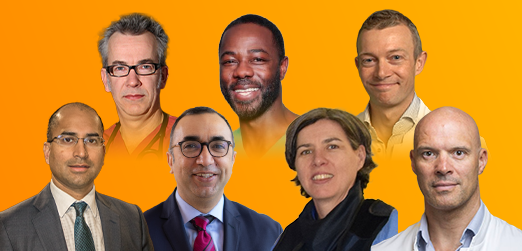- Home
- Getting it Right First Time in Severe Aortic Stenosis - Key Insights for Long Term Success
Getting it Right First Time in Severe Aortic Stenosis - Key Insights for Long Term Success
- Intervention
- Structural Heart Disease
Available Credit:
- 1.00
Course Published On:
Course Expiry Date:

Overview
In this satellite symposium, 'Getting it Right First Time in Severe Aortic Stenosis - Key insights for Long Term Success', hear from leading faculty as they consider when to use a surgery or TAVI-first approach, summarise clinical evidence to date and assess possible management scenarios by way of clinical cases.
This symposium is part of Transcatheter Interventions Online 2022, a world-class virtual event dedicated to transcatheter treatment strategies for coronary and structural heart disease.
Support Statement
This symposium is supported by an unrestricted educational grant by Boston Scientific. The scientific programme has not been influenced in any way by the sponsors.
Disclosure
In compliance with EBAC / EACCME guidelines, all speakers/chairpersons participating in this programme have disclosed or indicated potential conflicts of interest which might cause a bias in the presentations. The Organising Committee/Course Director is responsible for ensuring that all potential conflicts of interest relevant to the event are declared to the audience prior to the CME activities.
Terms & Conditions
Radcliffe Education requires contributors to our CME programmes to disclose any relevant financial relationships that have occurred within the past 12 months that could create a conflict of interest. These will be identified in the faculty section if applicable.
The session of ‘Getting it Right First Time in Severe Aortic Stenosis - Key insights for Long Term Success’ is accredited by the European Board for Accreditation in Continuing Education for Health Professionals (EBAC) for 1 hour of external CME credits.
Each participant should claim only those hours of credit that have actually been spent in the educational activity. EBAC works according to the quality standards of the European Accreditation Council for Continuing Medical Education (EACCME), which is an institution of the European Union of Medical Specialists (UEMS).
Through an agreement between the European Board for Accreditation in Cardiology and the American Medical Association, physicians may convert EBAC External CME credits to AMA PRA Category 1 Credits™. Information on the process to convert EBAC credit to AMA credit can be found on the AMA website.
Instruction to Participants
There is no fee for taking part in this online learning activity.
Activities are designed to be completed within 60 minutes and must be completed by the registered user. Physicians should only claim credits for time spent on the activity. To successfully earn credit, participants must complete the activity in full in the indicated time frame.
To complete the course and claim certification participants must:
- Read the course outline information supplied and complete pre-test questions if supplied prior to starting the activity. Users must read and study the activity in its entirety before completing the post-test questions.
- Your results will be automatically saved and if a pass score is achieved (where applicable), you may be eligible to claim credit for the activity and receive a certificate of completion.
Target Audience
- Cardiologists
- Interventionalists
- Surgeons who are involved and/or interested in transcatheter treatment strategies for coronary and structural heart disease
- Interventional Cardiology Nurses
Learning Objectives
Upon completion of this activity, participants will be able to:
- Recall current and predicted trends in TAVI with respect to preserving coronary access
- Consider determining factors for choosing valves in low risk populations
- Discuss solutions for maximising valve durability and haemodynamics and for treating degenerated TAVI
Module |
Title |
Duration |
Speakers |
|---|---|---|---|
| Welcome and Introduction | Welcome and Introduction | Ole De Backer | |
| Session 1 | What Does Current Data Tell Us About Long Term Outcomes? | Darren Mylotte | |
| Session 2 | Key Considerations for First Choice Valve in Low-Risk Populations | Ole De Backer Darren Mylotte | |
| Session 3 | Case Discussion | Colum Owens | |
| Live Case | Choice of Valve and Why? | Colum Owens | |
| Session 4 | Closing Remarks | Ole De Backer |
Key Considerations for First Choice Valve in Low-Risk Populations
Duration:
Speakers: Ole De Backer Darren Mylotte
Chair
Panelist












